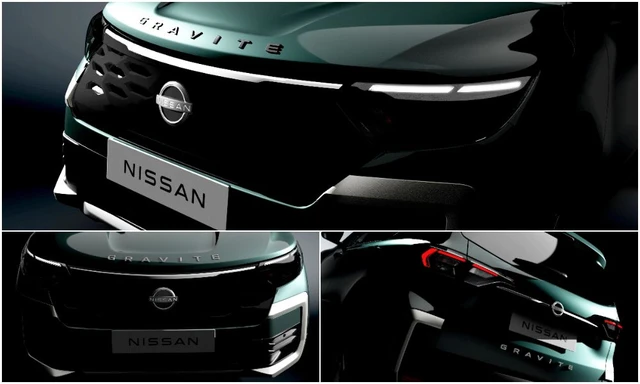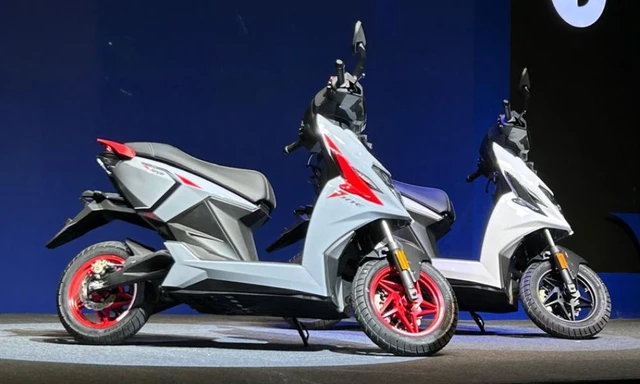The Amphibious Arena Has a New Marine Craft: Meet Textron Systems' SECAT

Textron used a catamaran design for SECAT to assure the vessel's mobility, speed, and minimal resistance despite transporting high cargoes. According to Textron, the SECAT can transport up to 500 tonnes of cargo over 500 nautical miles at high speeds (50 knots). This implies that the SECAT can carry out its tasks even on the high seas.

Evolution of the amphibious military vehicles
Amphibious assault vehicles (AAVs) have proven indispensable in military operations that combine marine and land-based elements. The amphibious tracked vehicle is designed so that it can both cross water and engage in ground defences. AAVs have the power and technology to cross deep water while deploying powerful weaponry and managing all terrains.

AAVs have developed since the first civilian prototype in 1935 to types like the modern Amphibious Combat Vehicle (ACV) deployed by the United States Marine Corps and Navy. These resolute vehicles' design has also improved, with greater armour, mechanical components, and supply and personnel capacity.
The "Alligator," developed by Donald Roebling, was the first AAV designed by a civilian. The Alligator was lightweight aluminium and included cleats on its tracks for added grip. It was created to improve emergency response during floods and storms, and Roebling tried to improve its mechanics and maximise its success potential. Its design, highlighted in LIFE magazine's article "Roebling's Alligator For Florida Rescues," prompted the US military to acquire a prototype in 1938.
How strong is it?
The Amphibious Assault Vehicle and the Amphibious Combat Vehicle vary primarily in that the former is tracked and the latter is wheeled. There are, however, lots of other exciting new additions to the ACV to look forward to. A redesigned V-shaped undercarriage provides additional protection against IED blasts. Handling is considerably enhanced, allowing it to become much faster when travelling on land - a significant advantage in battle.
Beast on land and the water
Like its predecessor the AAV, the new ACV is an amphibious vehicle that can operate on both land and water. The ACV has a 690 horsepower potential and can travel for 12 nautical miles and 325 land miles (at speeds of up to 65 mph!) before requiring refuelling. Inside, there's enough room for 13 Marines and three crew members, as well as storage for equipment and two days' worth of supplies.

Advent Of The AAVP-7A1
In 1977, the LVTP7 was replaced by the LVTP7A1, later dubbed the AAV7A1. The Cummins VT400 diesel engine, Position Location and Reporting System (PLARS), and enhanced diagnostics were all incorporated in this updated vehicle.
Hydraulic, electrical, weaponry, and suspension systems have all been improved to improve usefulness and dependability. An electric weapons station featured an updated M2HB.50-cal machine gun, Cadillac-Gage turret, and MK19 automatic grenade launcher.
Novel Technologies
In the 1980s, General Dynamics began work on an Expeditionary Fighting Vehicle or EFV. After years of development, the EFV was suggested as an armoured tracked vehicle capable of 20 knots on the water and around 27mph on land.
The EFV's performance and dependability were determined to be lacking in 2006, prompting authorities to reassess financing for the project. The project was suggested to be terminated in 2011 due to financial and functionality problems.
Success Of the Amphibious Combat Vehicle
The Amphibious Combat Vehicle (ACV) was designed when the cancellation of the Expeditionary Fighting Vehicle (EFV). BAE Systems, a business that provides the military with electronic, security, land, and maritime technology, develops the ACV. This vehicle's power, cargo capacity, and countermeasures have improved.
On land, the ACV has a range of over 325 miles and can travel at speeds of over 65 mph. It features a 690-horsepower engine and an 8x8 frame based on the Iveco Superav AAV. According to John Swift, BAE's head of amphibious systems, the ACV has a three-fold higher survival rate than the standard AAV.
The underside of the ACV had a V-shape meant to be more resistant to improvised explosive devices than the EFV, which had a vulnerable flat-bottom design (IEDs). The USMC tested the ACV and offered active comments to the manufacturer to enhance the design. According to February 2020, the US Marine Corps bought more ACVs for operational testing during the Low-Rate Initial Production phase.
Latest News
 Jaiveer Mehra | Jan 6, 2026Mahindra XUV 3XO EV Launched In India; Prices Start At Rs 13.89 LakhEssentially the successor to the XUV 400 EV, the 3XO EV is offered in two trim levels and solely with a 39.4 kWh battery.1 min read
Jaiveer Mehra | Jan 6, 2026Mahindra XUV 3XO EV Launched In India; Prices Start At Rs 13.89 LakhEssentially the successor to the XUV 400 EV, the 3XO EV is offered in two trim levels and solely with a 39.4 kWh battery.1 min read Jaiveer Mehra | Jan 6, 2026Nissan Tekton SUV World Premiere On February 4The Tekton will make its debut hot on the heels of the Gravite and will share its platform with the upcoming new Duster.1 min read
Jaiveer Mehra | Jan 6, 2026Nissan Tekton SUV World Premiere On February 4The Tekton will make its debut hot on the heels of the Gravite and will share its platform with the upcoming new Duster.1 min read car&bike Team | Jan 6, 2026New Bajaj Chetak With Hub Motor To Be Launched On January 14Expected to be positioned as a more affordable derivative of the iconic Bajaj scooter, the newest member of the Chetak family will be targeted at the TVS Orbiter and Vida VX2.2 mins read
car&bike Team | Jan 6, 2026New Bajaj Chetak With Hub Motor To Be Launched On January 14Expected to be positioned as a more affordable derivative of the iconic Bajaj scooter, the newest member of the Chetak family will be targeted at the TVS Orbiter and Vida VX2.2 mins read Jaiveer Mehra | Jan 6, 2026Nissan Gravite MPV To Debut On January 21B-segment MPV to share its underpinnings and powertrain options with the Renault Triber.1 min read
Jaiveer Mehra | Jan 6, 2026Nissan Gravite MPV To Debut On January 21B-segment MPV to share its underpinnings and powertrain options with the Renault Triber.1 min read Jaiveer Mehra | Jan 6, 2026Mahindra XUV 7XO Prices, Variants ExplainedFacelifted SUV is offered in a choice of six variants and with petrol and diesel engine options.1 min read
Jaiveer Mehra | Jan 6, 2026Mahindra XUV 7XO Prices, Variants ExplainedFacelifted SUV is offered in a choice of six variants and with petrol and diesel engine options.1 min read car&bike Team | Jan 5, 2026Updated Simple One Electric Scooter Launched At Rs 1.50 Lakh; 5 kWh Variant Promises Up To 265 KM RangeWith a series of changes made to the existing scooter, the start-up claims to have improved range, top speed as well as on-road behaviour of the Simple One.1 min read
car&bike Team | Jan 5, 2026Updated Simple One Electric Scooter Launched At Rs 1.50 Lakh; 5 kWh Variant Promises Up To 265 KM RangeWith a series of changes made to the existing scooter, the start-up claims to have improved range, top speed as well as on-road behaviour of the Simple One.1 min read
 Amaan Ahmed | Jan 3, 2026VLF Mobster 135 300 KM Review: Fun But FlawedA 125 cc scooter with Italian design and Chinese genes is a rare combination, and while some may be tempted to dismiss it because of its origins, the VLF Mobster shows 125s can also be exciting – but not without compromises.11 mins read
Amaan Ahmed | Jan 3, 2026VLF Mobster 135 300 KM Review: Fun But FlawedA 125 cc scooter with Italian design and Chinese genes is a rare combination, and while some may be tempted to dismiss it because of its origins, the VLF Mobster shows 125s can also be exciting – but not without compromises.11 mins read Preetam Bora | Dec 30, 2025TVS Orbiter Review: Real-World Performance and Range TestedThe TVS Orbiter is a promising electric scooter promising decent range, practicality and pricing. But is there any reason to avoid it? We spent a few days getting to know it better.9 mins read
Preetam Bora | Dec 30, 2025TVS Orbiter Review: Real-World Performance and Range TestedThe TVS Orbiter is a promising electric scooter promising decent range, practicality and pricing. But is there any reason to avoid it? We spent a few days getting to know it better.9 mins read Jafar Rizvi | Dec 24, 2025MG Windsor EV 38 kWh Long-Term Report: IntroductionThe Windsor EV has joined our garage, and before it settles into daily duty, I took it out to get a sense of what living with an electric car is like.4 mins read
Jafar Rizvi | Dec 24, 2025MG Windsor EV 38 kWh Long-Term Report: IntroductionThe Windsor EV has joined our garage, and before it settles into daily duty, I took it out to get a sense of what living with an electric car is like.4 mins read Seshan Vijayraghvan | Dec 23, 20252026 Kia Seltos Review: Formula Is Spot On, But Is The Timing Right?The 2nd-gen Kia Seltos has arrived, but it has the challenge of facing strong rivals like the Victoris and Sierra. The question is simple - Does it still have what it takes?9 mins read
Seshan Vijayraghvan | Dec 23, 20252026 Kia Seltos Review: Formula Is Spot On, But Is The Timing Right?The 2nd-gen Kia Seltos has arrived, but it has the challenge of facing strong rivals like the Victoris and Sierra. The question is simple - Does it still have what it takes?9 mins read car&bike Team | Dec 26, 2025Tata Punch EV Long-Term Second Report: Highway Performance, Pros & ConsAfter a week of living with the Tata Punch EV Long Range—including a proper Mumbai-Nashik highway test—we've learned what this little electric SUV is really made of.1 min read
car&bike Team | Dec 26, 2025Tata Punch EV Long-Term Second Report: Highway Performance, Pros & ConsAfter a week of living with the Tata Punch EV Long Range—including a proper Mumbai-Nashik highway test—we've learned what this little electric SUV is really made of.1 min read


















































































































